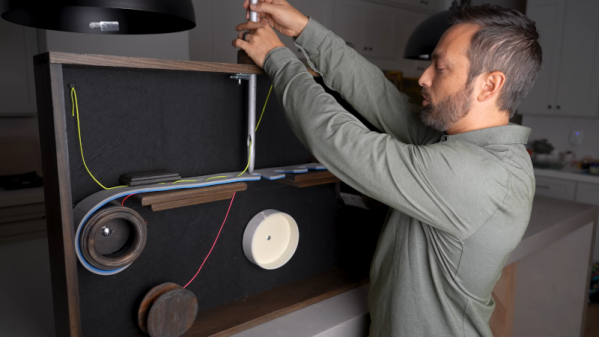If you live in a compact space, sometimes you have to get creative with your furniture to make the most of it. This wall-hanging table design from [diyhuntress] is perfect for those situations where you need a table, but you don’t want it taking up the whole room when it’s not in use. Plus, it’s kinda stealthy, which makes it even more fun!
The table is a folding design, with a flat wooden top, and an equally-sized supporting leg that goes down to the ground. The other end of the table is supported by a frame on the wall, which also contains several shelves for small objects. The trick is that the table top and support are hinged together, so that they can fold up and sit in front of the shelves, essentially hanging the whole assembly from the wall. Even better, by painting a simple artwork on the support, the whole thing just looks like a decor piece with no clue as to its hidden functionality.
It’s a fun build, and one that you could easily knock out in a weekend with some basic woodworking skills. We’ve featured some other nifty shelf designs before, too. Just remember, too – a neat and tidy space is a boost to your hacker productivity, so don’t rule this out for your own use!
Continue reading “Hidden Wall-Mount Table Looks Like Hanging Art”


















